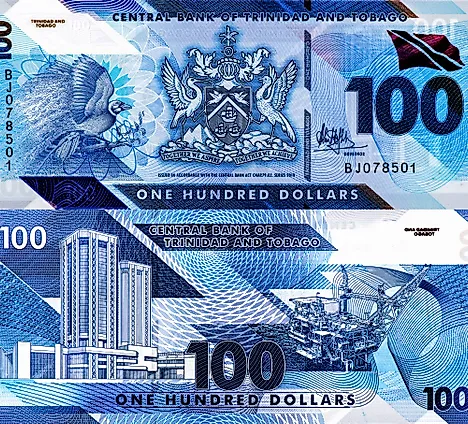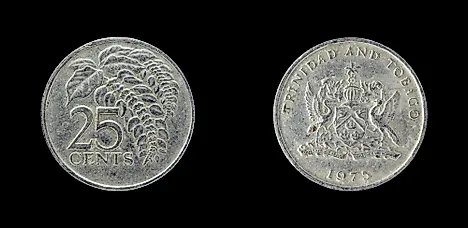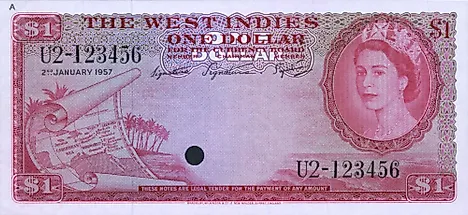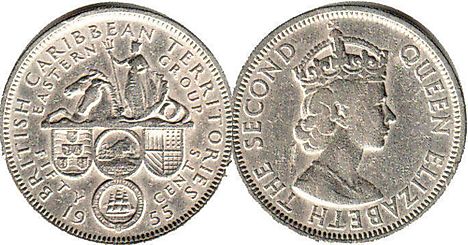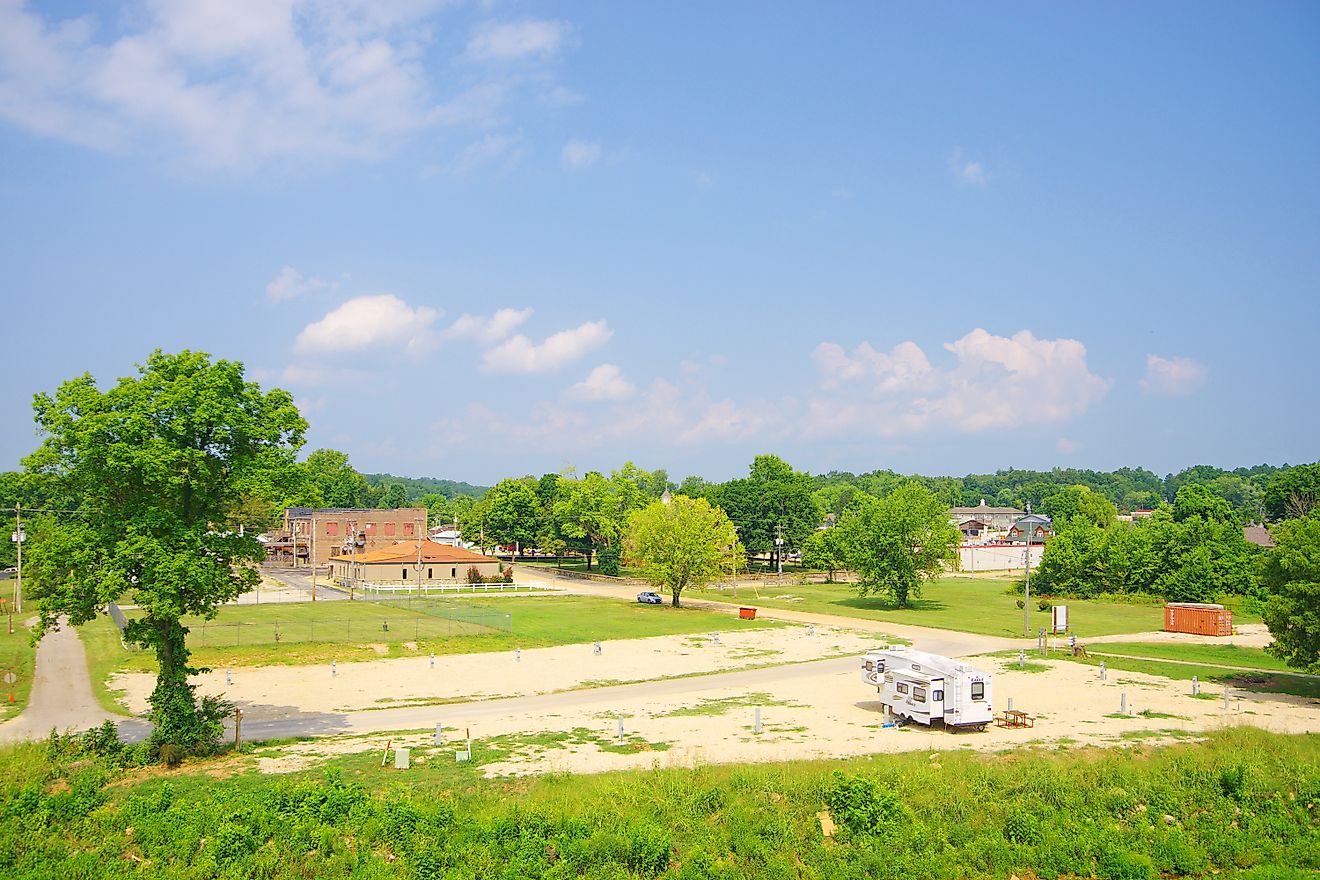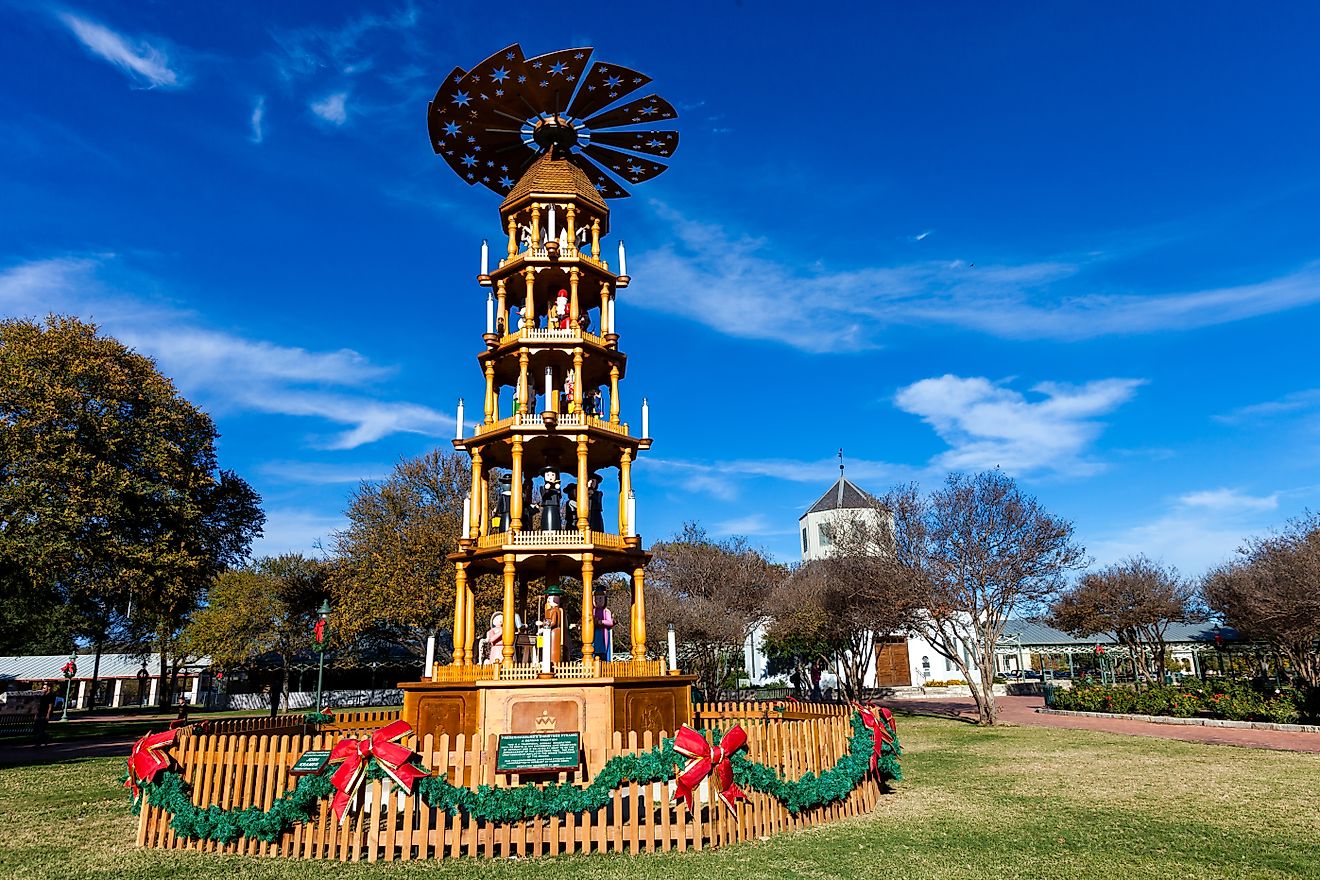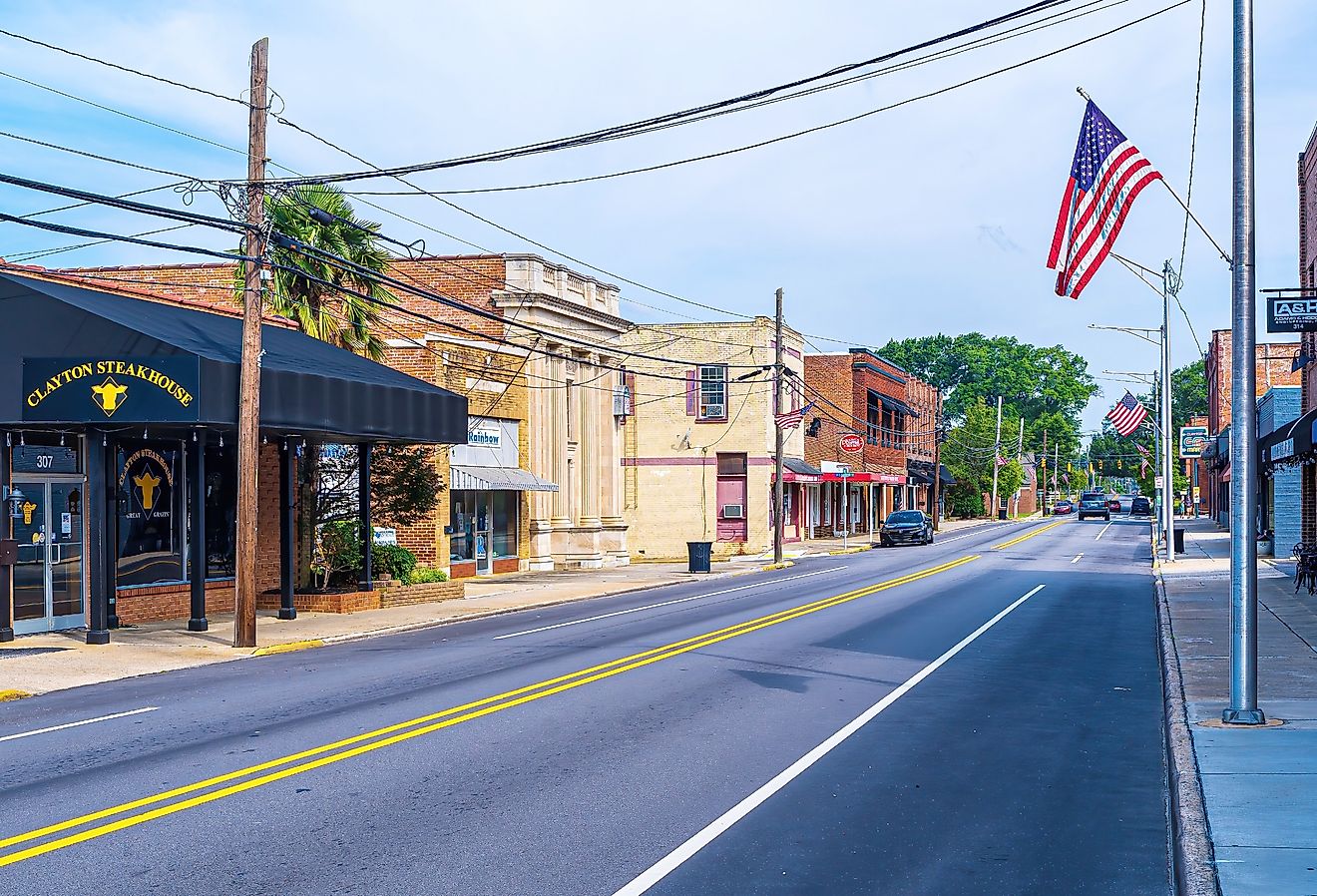Flags, Symbols & Currency of Trinidad and Tobago
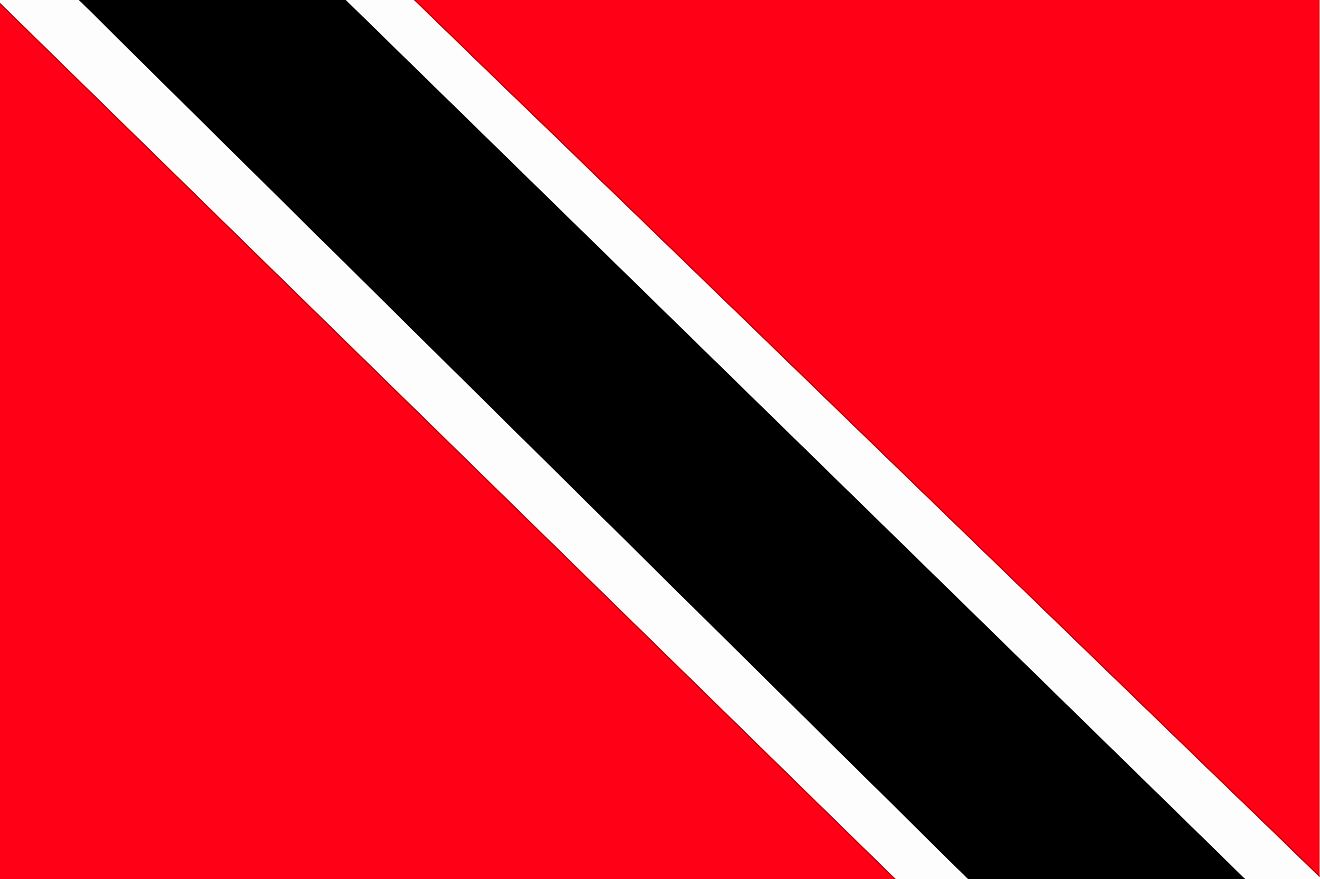
The National Flag of Trinidad and Tobago was officially adopted on August 31, 1962. The flag was designed by Carlisle Chang.
The National Flag of Trinidad and Tobago features a red background with a white-edged black diagonal band placed across the upper hoist-side to the lower fly side. The flag colors represent the elements of earth, water, and fire. The black color stands for the wealth of the land and the hard work and dedication of the people. The white color symbolizes the sea surrounding the islands, the purity of the country's aspirations, and equality. This color also stands for the unity between the islands that make up this country. The red color symbolizes the warmth and energy of the sun, the vitality of the land, and the courage and friendliness of its people. The flag has a height-to-width proportion ratio of 3:5.
History of the Flag of Trinidad and Tobago
Throughout history, Trinidad and Tobago have had several flag variations. From 1889 until its independence, this country was a colony of the UK. Under this colonial rule, the flag had a solid blue background with the flag of the UK located in the upper left corner. In the center of the right side of the flag was a circular image with three ships and a small rowboat floating in the ocean with mountains in the background along the coastline. Below this depiction were the words: The mingling of people and the joining of people by treaties is approved (as translated from the original Latin). The same flag with a red background was also used during the colonial era. After their independence from Britain, the government decided on a new flag, eventually settled on a flag design submitted by Carlisle Chang. The new flag was formally adopted by the National Independence Committee as the national flag in 1962.
Symbols of Trinidad and Tobago
The National Coat of Arms of Trinidad and Tobago

The current official National Coat of Arms of Trinidad and Tobago was adopted in 1962 and was based on a design by Carlisle Chang and George Bailey. Placed at the top of the Coat of Arms is a crest containing a golden ship wheel and a fruited coconut palm. Beneath the ship wheel is a wreath that holds the mantle in place. Below it is a helm containing a front-facing golden helmet representing the Queen. The shield of the coat of arms contains the same colors as the nation's flag, and carry the same meaning. The three gold ships within the shield represent Christopher Columbus' ships: the Santa Maria, La Nina, and La Pinta. The two birds above the ships, in the black section, are hummingbirds representing the more than sixteen different species of hummingbird that have been recorded on the island of Trinidad. On the left side of the shield stands a Scarlet Ibis (the national bird of Trinidad), while on the right is a Cocrico (the national bird of Tobago). Below the Scarlet Ibis are three hills, representing the Trinity Hills in southern Trinidad. Those were the hills that Christopher Columbus saw during his visit to the islands, and which prompted him to give the name, "Trinidad." The island rising out of the waters beneath the Cocrico represents Tobago, and below these birds is the Nation's motto, "Together We Aspire, Together We Achieve."
National Motto
"Together We Aspire, Together We Achieve"
National Anthem
- Anthem Title: "Forged from the Love of Liberty"
- Music Composer: Patrick Stanislaus Castagne
- Lyricist: Patrick Stanislaus Castagne
- Date of Adoption: August 31, 1962
"Forged from the Love of Liberty" is the national anthem of Trinidad and Tobago. The music of the anthem and the lyrics have been created by Patrick Stanislaus Castagne. The anthem was officially adopted on August 31, 1962.
"Forged from the Love of Liberty"
Forged from the love of liberty
In the fires of hope and prayer
With boundless faith in our destiny
We solemnly declare:
Side by side we stand
Islands of the blue Caribbean sea,
This our native land
We pledge our lives to thee.
Here every creed and race find an equal place,
And may God bless our nation
Here every creed and race find an equal place,
And may God bless our nation.
The Currency of Trinidad and Tobago is the Trinidad and Tobago dollar
The current official currency of Trinidad and Tobago is the Trinidad and Tobago dollar (TT$). It is subdivided into 100 cents. It is minted and distributed by the Central Bank of Trinidad and Tobago.
Coins
Currently, coins in denominations of 5 cents, 10 cents, and 25 cents are in circulation.
The use of coins in the country commenced in 1966 when they were minted and distributed in denominations of 1¢, 5¢, 10¢, 25¢, and 50¢. In 1969, the first coin in the dollar denomination was distributed but later replaced with a smaller coin in 1995. The 1¢ and 5¢ coins are struck with a bronze, while the rest are stuck with cupro-nickel. On the obverse, the coins bear Trinidad and Tobago's Coat of Arms, while the reverse has exclusive designs featuring the coin itself that lasted up to 1976, with added extra designs of a flower or a national bird. Besides, there are $5, $10, $100, and $200 coins, which are no longer in use but can be found at the Central Bank of Trinidad and Tobago as souvenirs for tourists.
Banknotes
Currently, banknotes in denominations of $1, $5, $10, $20, $50, $100 are in circulation.
The first government banknotes were issued in 1905 by the Royal Bank of Canada in denominations of $5, $20 & $100. The notes replicated the set of circumstances prevailing at the time, with a hundred dollars equivalent to twenty pounds, sixteen shillings, and eightpence sterling. The state of affairs was solely for the Eastern Caribbean region owing to the geographic propinquity to British Guiana. The current notes in circulation were issued in 1964 by the Central Bank of Trinidad and Tobago. The obverse of the notes features the coat of arms in the middle, a national bird, and a landmark in Trinidad. The reverse bears the portrait of the building of the Central Bank of Trinidad and Tobago. The newest issue banknotes released in 2003 added new security features, as well as making them darker in their different colors.
Historical currencies of Trinidad and Tobago
Having been a British colony, the currency history follows a similar trend as the other British Eastern Caribbean colonies that used the British West Indies dollar as the legal tender. In 1964, Trinidad and Tobago introduced their currency (dollars): the Trinidadian dollar and the Tobagan dollar. These currencies were in use until 1976 when the Trinidad and Tobago dollar and the Eastern Caribbean dollar ended their relationship, leaving the dollar as the legal tender on the island. The exchange rate remained tied to the traditional rate of one pound being equivalent to four dollars and eighty cents, following the gold sovereign. In 1989, VAT was introduced and the dollar switched the exchange rate system from a fixed regime to a managed floating regime.


